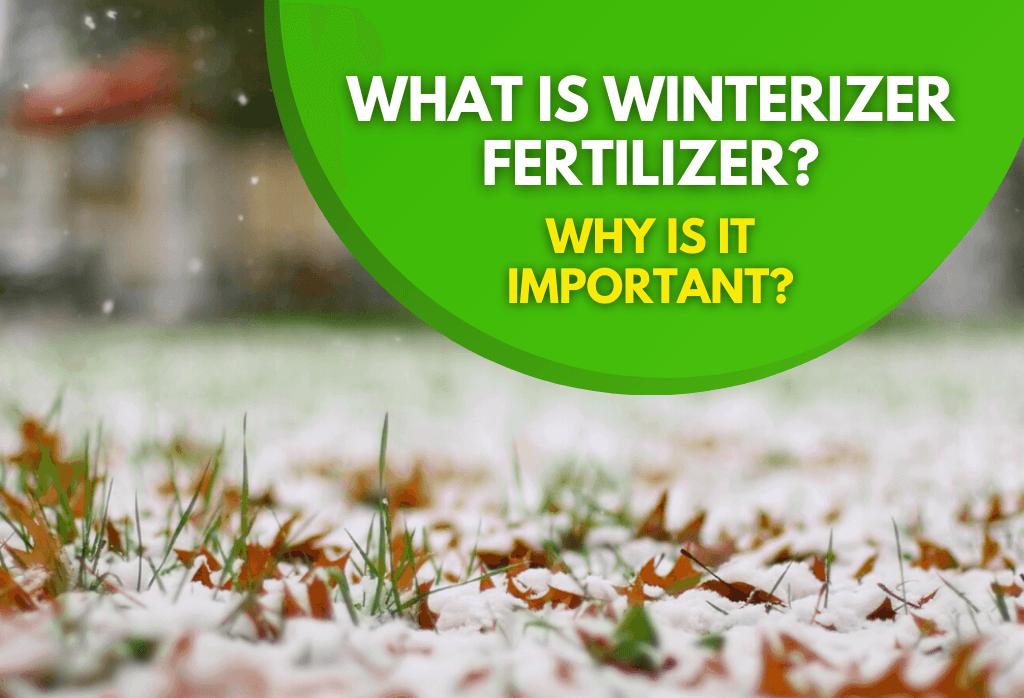What Is A Lawn Winterizer?
For the healthiest, most vigorous lawn, supplemental winterizer fertilizer is required. Most industry pros agree, fertilizing the lawn approximately every five to six weeks during the growing season, will maximize the lawn’s potential and produce a consistent green color all year. In addition, regular fertilizations keep the grass plants growing at their optimum rate. This means a thicker lawn with fewer weeds.
Of specific importance, winterizer is the last fertilization of the season, applied in late fall. This application is referred to as a “Winterizer” treatment because of its important role in preparing the lawn for the rigors of the cold, windy, stressful winter months ahead. An effective “Winterizer” fertilizer will include potassium, a key component of cell walls.

Why Winterizer is Important for Maintaining Lawn Health
By applying a fertilizer built to maximize plant cell wall strength and vigor, grass plants are better able to retain water throughout the winter. Most people are not aware that the majority of winter damage on turf is due to water loss through desiccation. A “Winterizer” fertilization improves the lawn’s ability to make it through to spring in good condition.
In addition, again a little-known fact is that grassroots do not stop growing quickly in the fall. The top growth of the grass blades generally slows dramatically or stops, but the roots continue to grow. Root growth continues into and, at times, through the colder winter months. A “Winterizer” fertilizer helps plants take up and store needed carbohydrates for the stressful season ahead.
For more details on “Winterizing” your lawn, click here.
Join Our Free Lawn Care Newsletter
Stay Up to Date With The Latest News & Updates
* We don’t share your info with anyone ever.






